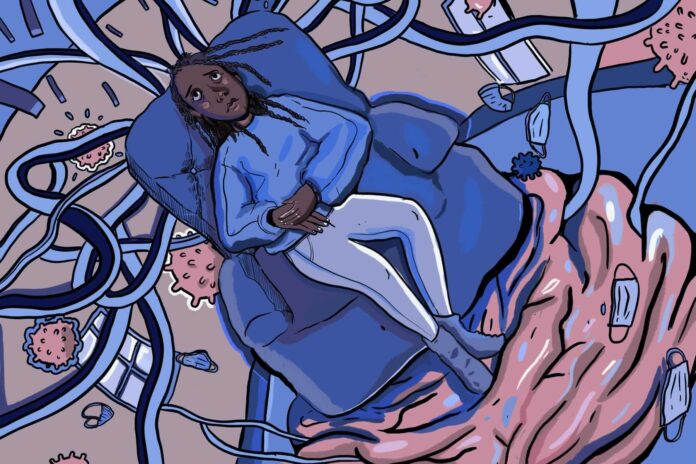More than two years since its onset, the COVID-19 pandemic remains a worldwide threat bolstered once again by new viral variants. While the virus continues to ravage communities across the globe, there is yet another crisis that warrants concern: The mental health crisis.
With rigorous restrictions implemented globally to combat the virus’ rapid spread, it is imperative that the interaction between isolation and stigmatized forms of mental illness are at the forefront of discussions about COVID-19.
Over the last few months provinces have seen constantly changing restrictions. After returning to a modified version of Step 2 of the province’s reopening plan, Ontario lifted indoor capacity limits in public spaces and proof of vaccination requirements for businesses on March 1.
B.C. also faced the implementation of updated safety measures at the beginning of the year that caused a similar decline in morale to that observed in Ontario. Psychologist Dr. Heather McEachern told Global News that the worsened state of the virus wrought by the variant caused what she calls the “COVID whiplash phase.”
Oscillating between decreased restrictions followed by increased stringency is causing many Canadians to experience burnout due to the ever-changing rules. Those affected most by burnout include healthcare workers who are on the frontlines of treatment and prevention.
Beyond exhaustion, restrictions have also made the population vulnerable to loneliness, isolation and declined states of mental health.
The Centre for Addiction and Mental Health (CAMH) conducted a series of national surveys between May 2020 and July 2021 to track fluctuations in the mental health and substance use habits of Canadians. The survey found that levels of anxiety, depression and binge-drinking have remained consistent over the course of the pandemic despite lifting restrictions.
The results are especially concerning when the progression of the virus is considered. According to CTV News, about 480 new cases of COVID-19 were reported in Canada on July 13, 2021, the survey’s final day of collection. Five months later, the country was met with more than 35,000 new cases on Jan. 13.
The mental health crisis Canada is experiencing is unlikely to disappear as the presence of COVID-19 veers far into our future, especially with vaccine passport requirements lifting in several Canadian provinces. If the vague notion of a “new normal” is to arise in a pandemic world, the need to account for both physical and mental health is crucial.
Managing mental health struggles is never without its obstacles but the additional layer of the pandemic creates an additional complication with its own set of stressors.
As the results of the CAMH survey delineate, Canadians from all demographics are experiencing significant mental strife. But the survey fails to acknowledge iterations of mental illness beyond the reported anxiety and depression.
A recent survey conducted by RBC Insurance shows the highest incidence of respondents who consider anxiety and depression to be disabilities since 2019. According to Maria Winslow, senior director of life and health, the results suggest that mental health stigma among Canadians is decreasing.
Though the research from CAMH and RBC ignores other severe diagnoses like obsessive-compulsive, borderline personality and bipolar disorder and schizophrenia which are often underreported in mainstream media.
Meanwhile, individuals diagnosed with psychiatric conditions who suffered hospitalization from COVID-19 had higher mortality rates than individuals without prior diagnoses, according to a study conducted at the Yale New Haven Health System.
The risk demands that prominent studies and resources account for the diversity of mental illness, even while conditions like bipolar disorder and schizophrenia affect fewer members of the Canadian population compared to anxiety and depression.
Without increased acknowledgement from governments and the media about the pandemic’s effect on mood, personality and psychotic disorders alike, people may turn to unfavourable coping techniques, worsening or igniting detrimental habits such as the binge-drinking incidence observed by CAMH, or suffer from heightened symptoms.
Accounting for the entire scope of health involves simultaneously addressing its aspects. Case tracking and restriction updates should be followed by mental health advisories that offer resources Canadians can consult to ease the burden of their emotional symptoms, and links to recent statistics that monitor factors related to the differing forms of mental illness as the pandemic ensues.
Rather than overshadowing one safety component to highlight the other, the physical and mental harms of COVID-19 must be addressed in tandem to account for Canadians’ overall health. Without equal consideration of mental illnesses within the discussions of COVID-19, the pandemic’s threat to Canadians’ health will continue now and in the future.
Featured graphic by Sara Mizannojehdehi.






